A delicious, beautiful Spring shoots with a flavor reminiscent of asparagus. Smilax shoots are a plant every forager should know.
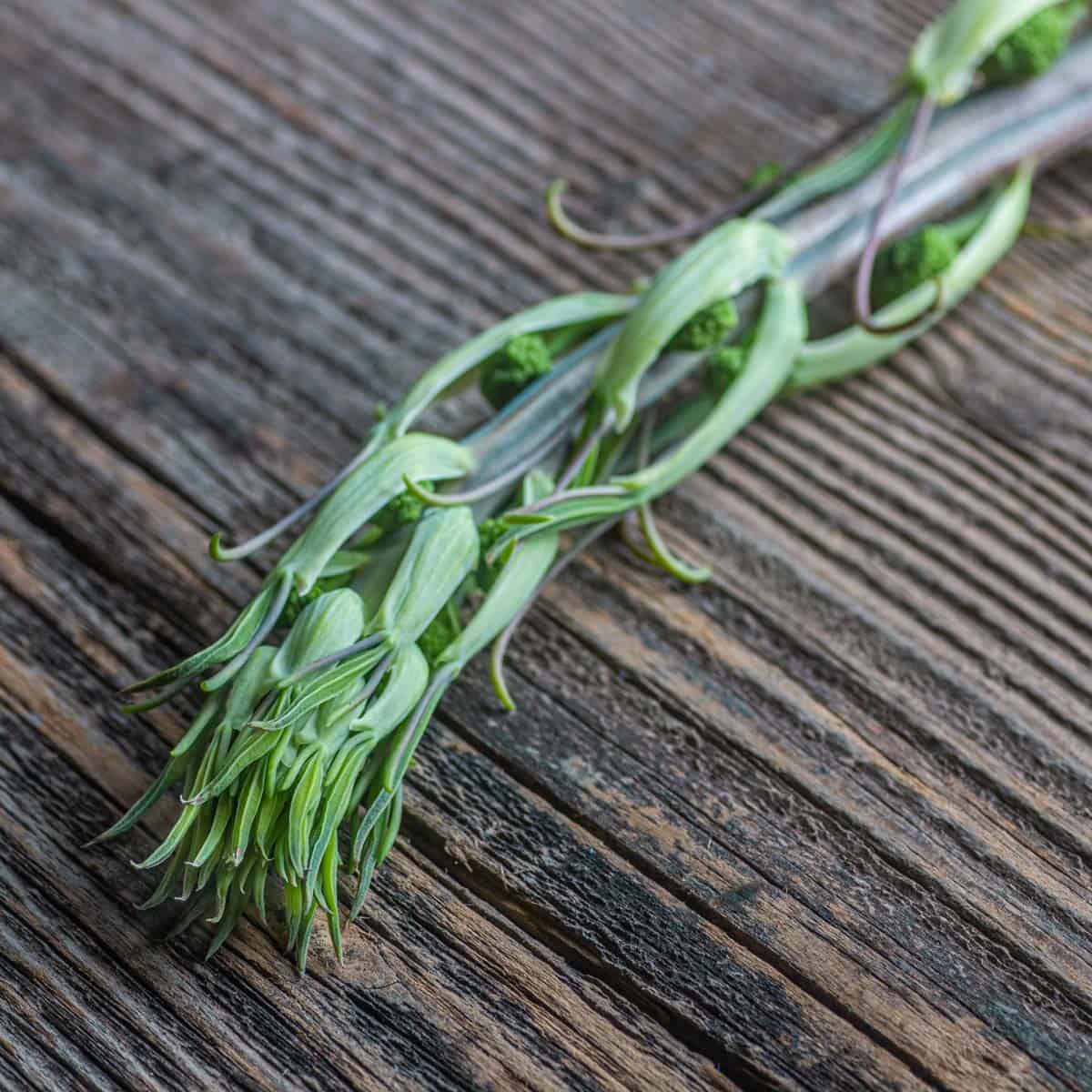
A few years ago I was in Northern Florida on a T.V. pilot shoot called Forage to Table that was supposed to focus on squirrel hunting, foraging plants, myself, and Madison Parker: a Vietnam Vet who trains Seal Team 6 in pre-black powder survival techniques.
Madison was supposed to get the meat and I was supposed to be hunting plants and mushrooms, but foraging in a totally new area meant that the deck was stacked against me. Luckily there were a few locals around that knew the terrain. One thing I picked out was type of shoot the locals called "Florida Green Beans".
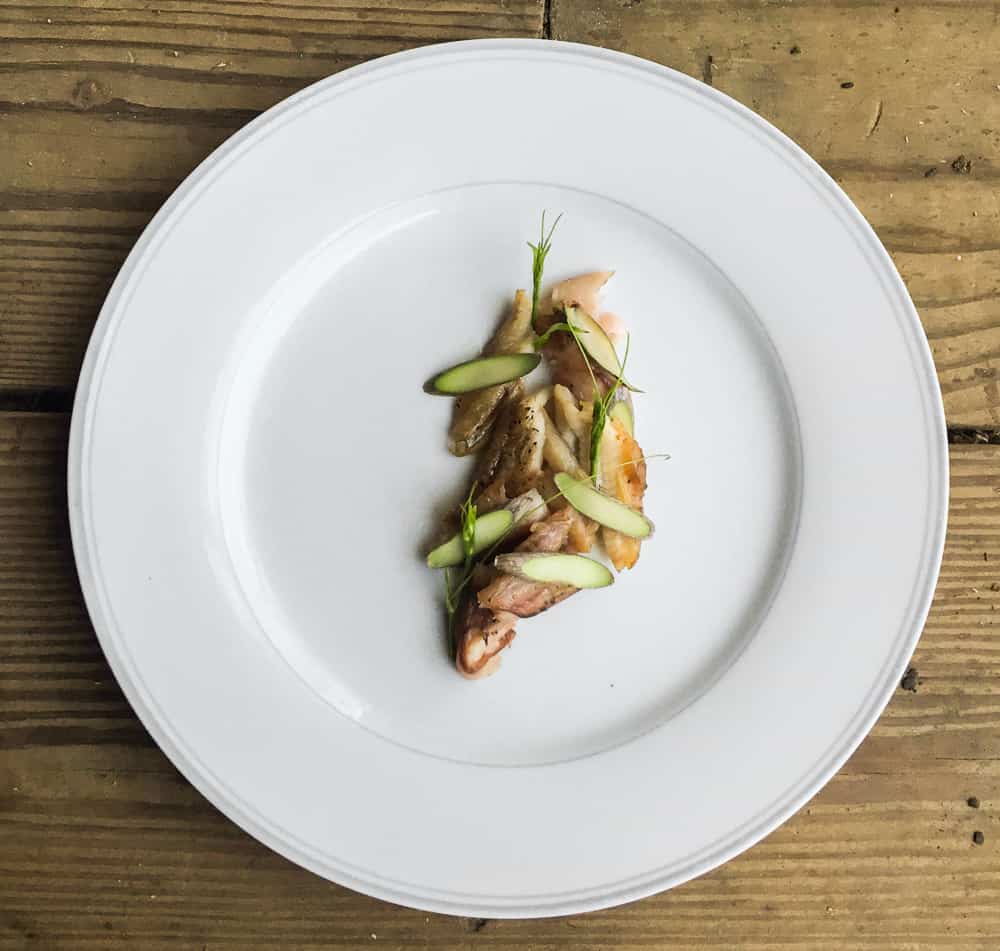
A little research (read as: paging through a book on Florida's edible plants I bought on the way down.) told me the "green beans" were smilax shoots, a sort of edible shoot you can pick in the spring.
Smilax shoots: a long, clean, delicate vegetable
The smilax I picked in Florida varied from resembling thin asparagus to completely dwarfing any asparagus I'd ever seen. Some of the shoots were well above my head at about 5'10, even in the spring. It was easy to harvest a large amount in a small time, and they tasted great: very mild, similar to asparagus if it had a little mucilage in the stem, but not so much that it detracted from enjoying it at all. To sweeten the deal, they're very clean, I haven't even felt the need to wash them. Sam Thayer says similar things in his discussion of the plant, in his first book Forager's Harvest.
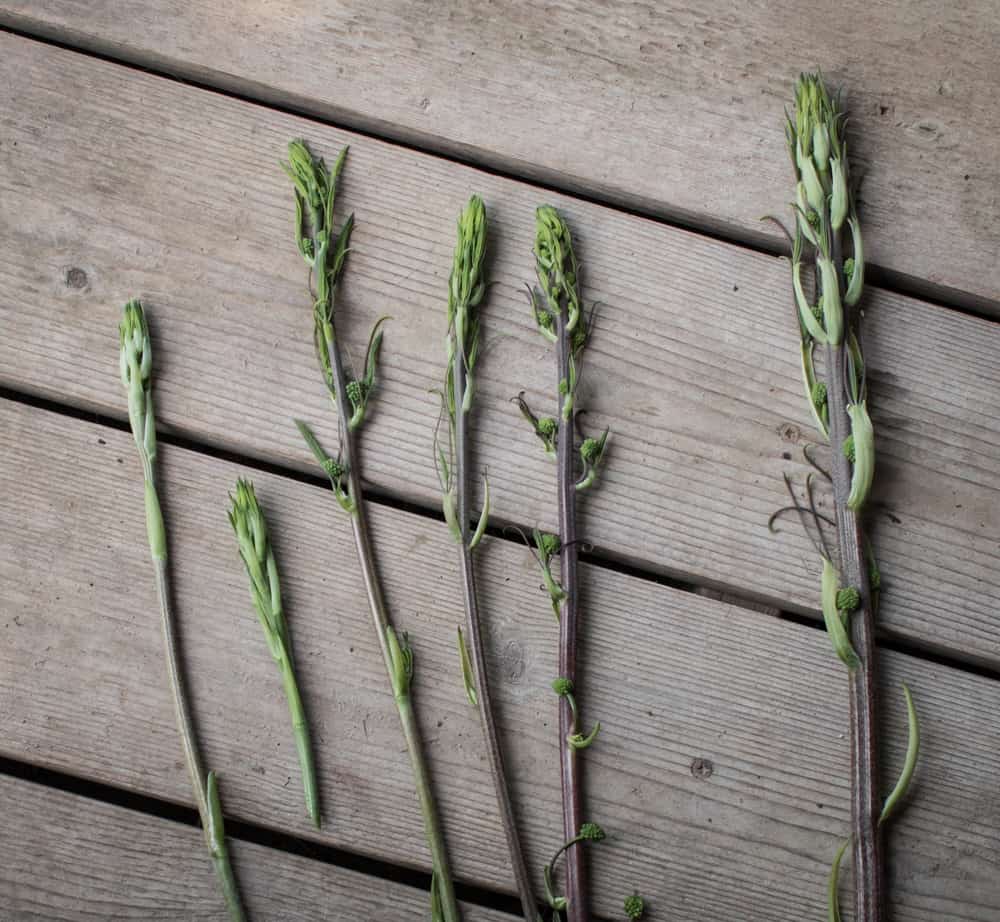
I made a dish after eating them raw for a few days, and pretty much forgot about the smilax (the t.v. pilot was a bust) for a couple years. I thought the smilax was supposed to grow in my areas I hunt in the Midwest, but I never seemed to see anything resembling the girth of the shoots we picked in Florida. I would find related looking greenbriar vines, but they were very small. Where were the big bastard shoots that had been all over in Northern Florida?
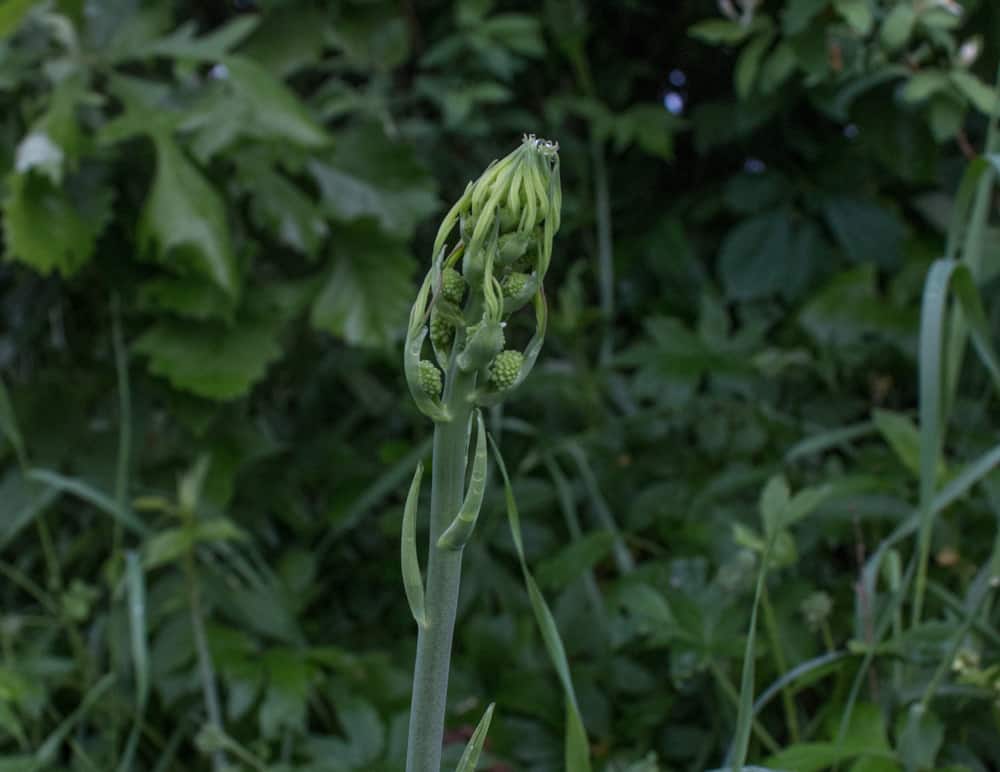
It took 3 years, but one day during morel season in Wisconsin 2017 I got them.
Habitat
After getting skunked on morels for the better part of a morning, I went to the back-up patch, and found myself staring across a farm field to see if I could spot dead elms.
Heat bearing down on me, and the urge for lounging in the A.C. growing, I noticed the fence row in front of me was filled with hop shoots. It was oppressively hot and in the 90's--unusual for May, and having already gotten skunked checking out some new morel territory, I decided to grab a few hop shoots and leaves in leau of trudging through the bush hunting fickle morels.
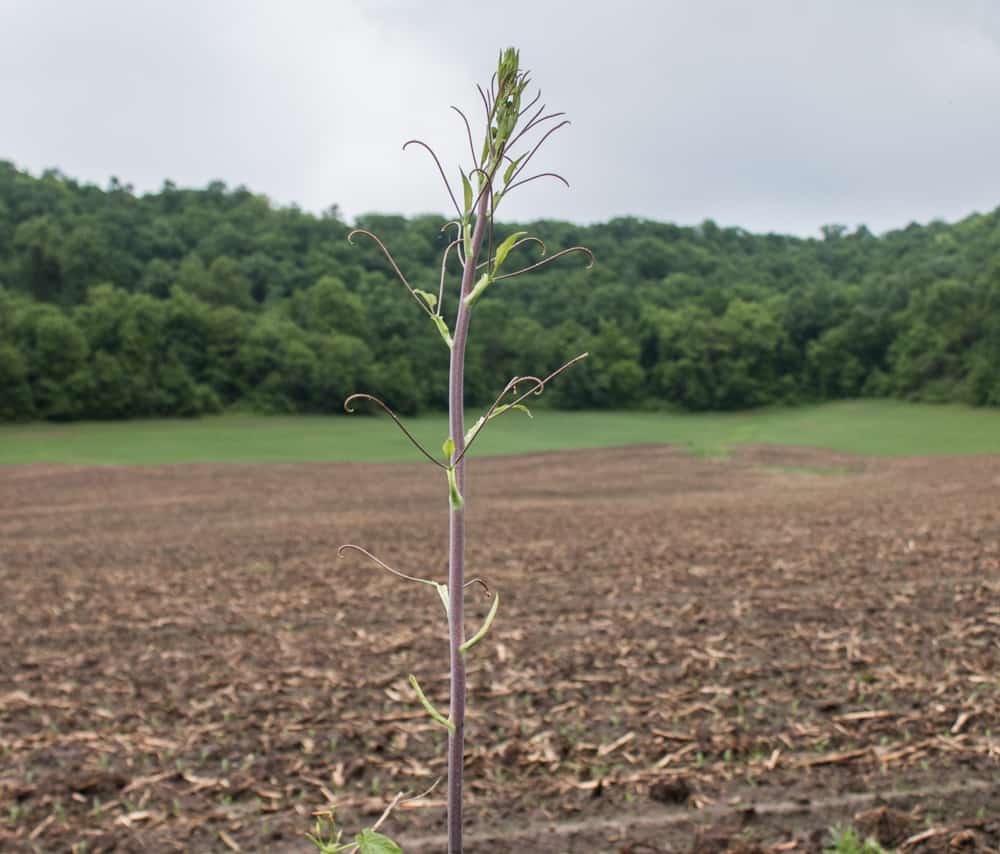
I was scanning the area for more hop shoots, and BOING! I noticed a large, no, huge purple shoot sticking out of the grass on there side of the road. Immediately memory said it was the smilax, but I second guessed myself.
Baptisia had fooled me before when I was looking for asparagus, so I cautiously took a few shoots to analyze, not really believing it could be the giant, tasty shoots I'd eaten the few years back.
My I.D. Aha! Moment: the mottled skin
I sat in the A.C. of the car for a bit and looked at the alien purple shoots. Something about them caught my eye and triggered a memory: the shoot had a distinctively mottled skin, beautiful, and easily peeled as the stalk got tough down towards the base. The stem was the kicker, I knew it was at least some related cousin of the smilax I'd had in Florida.
How do they taste?
These things are great, juicy, mild, crisp--everything you could hope for in a shoot vegetable, and they're great raw.
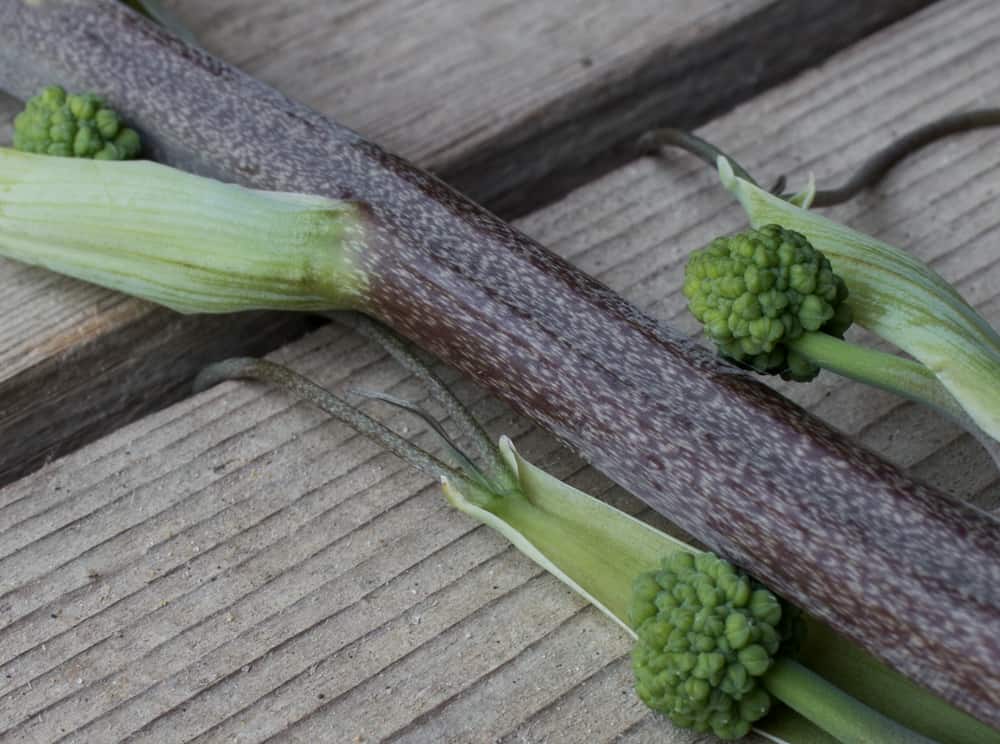
Sustainable Harvesting
Continual harvesting every year of the same plants will apparently deplete them, so it's probably best to move around and cover a lot of ground as you harvest, and leave more than you take.
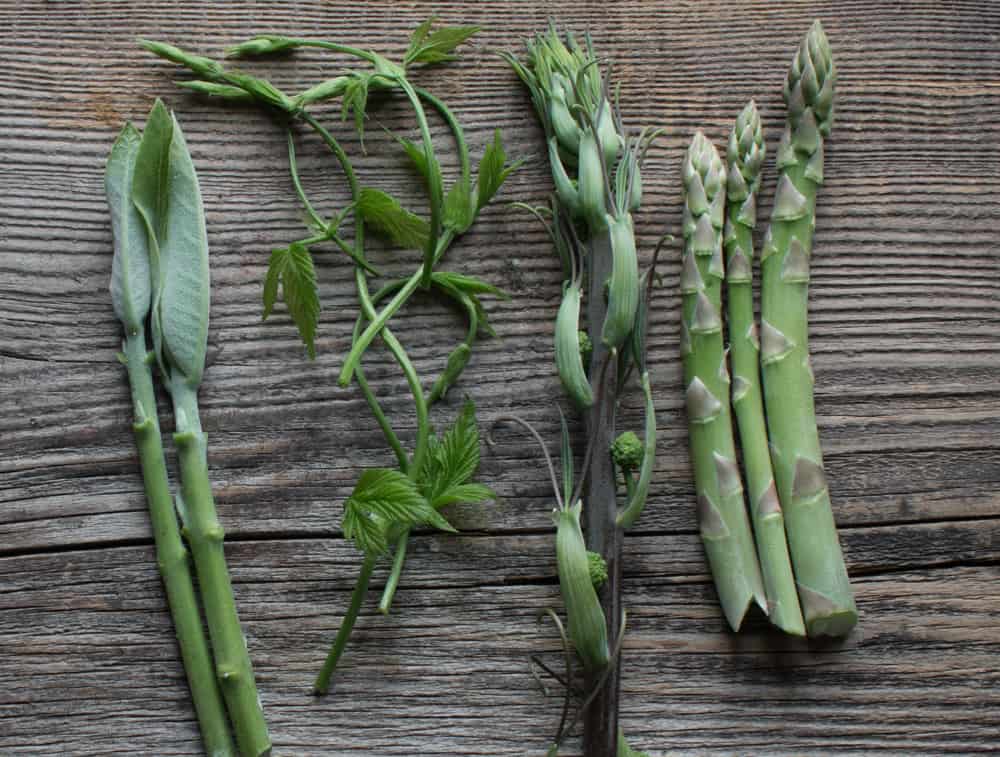
All the shoots
I love to cook spring shoots together, and I usually include asparagus-it's a great way to make people think critically about understanding asparagus is just one of many shoots you can eat that eventually grow into a larger organism to finish their reproductive cycle. Above are a few different shoots of Spring. Many of you will know some, if not all of them: milkweed, hops, smilax, asparagus.
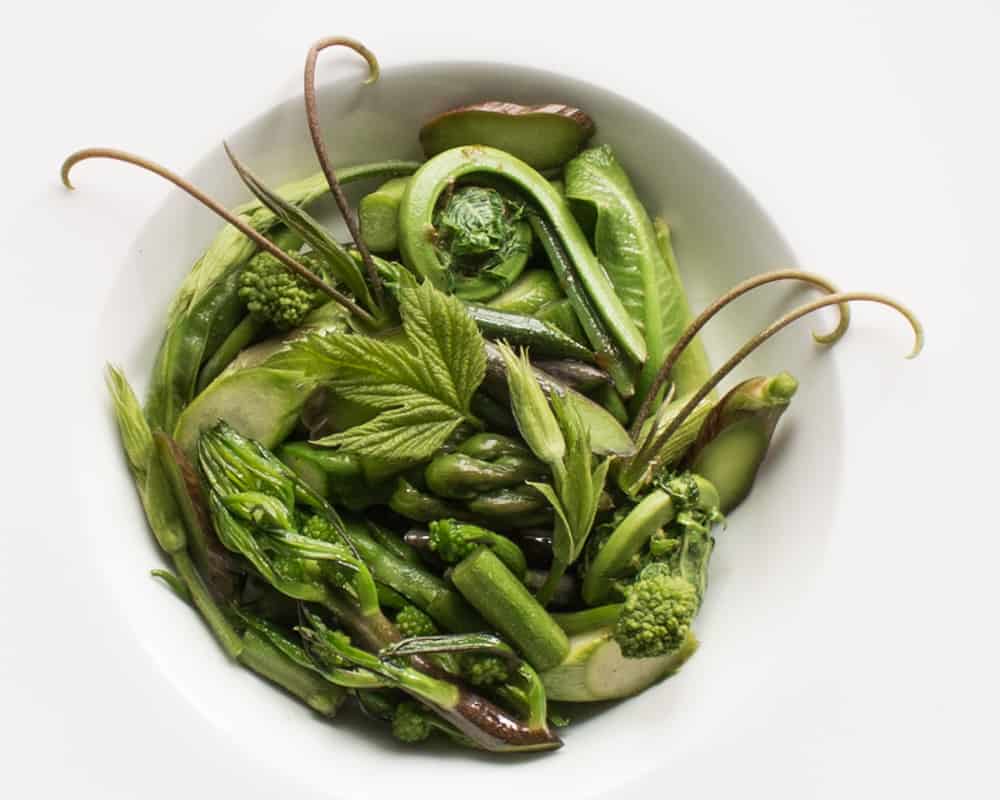
Chef's tip: bend the stems to find where they're tender
Just like asparagus, you can bend these to find out where they're tender, although some of the lower portion of the stem and the upper portion can be peeled to reveal more tender shoot, depending on the age of what you're picking.
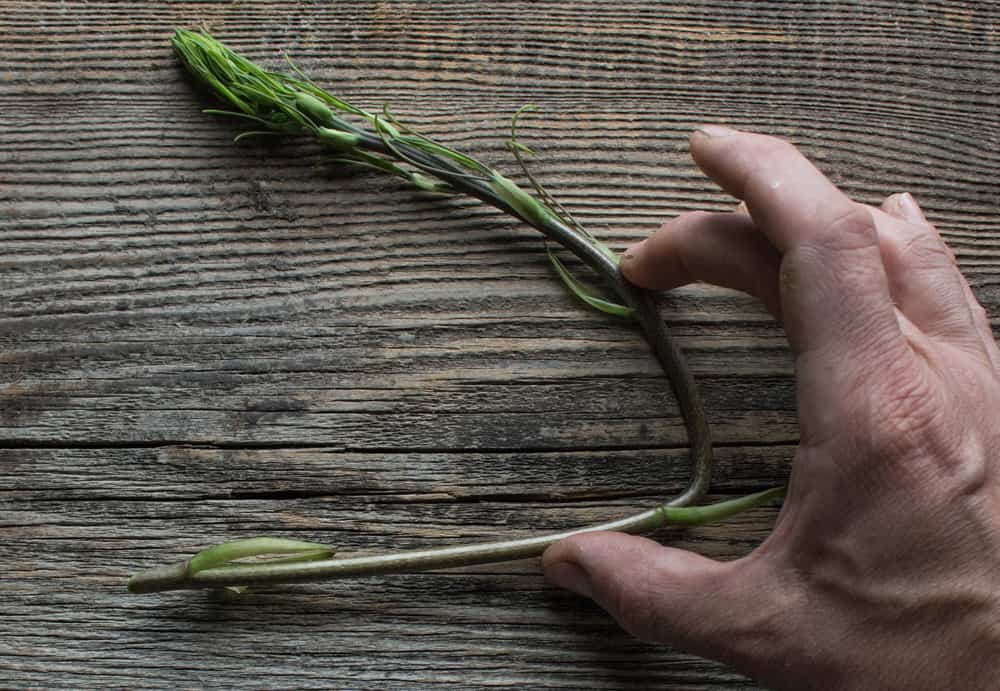
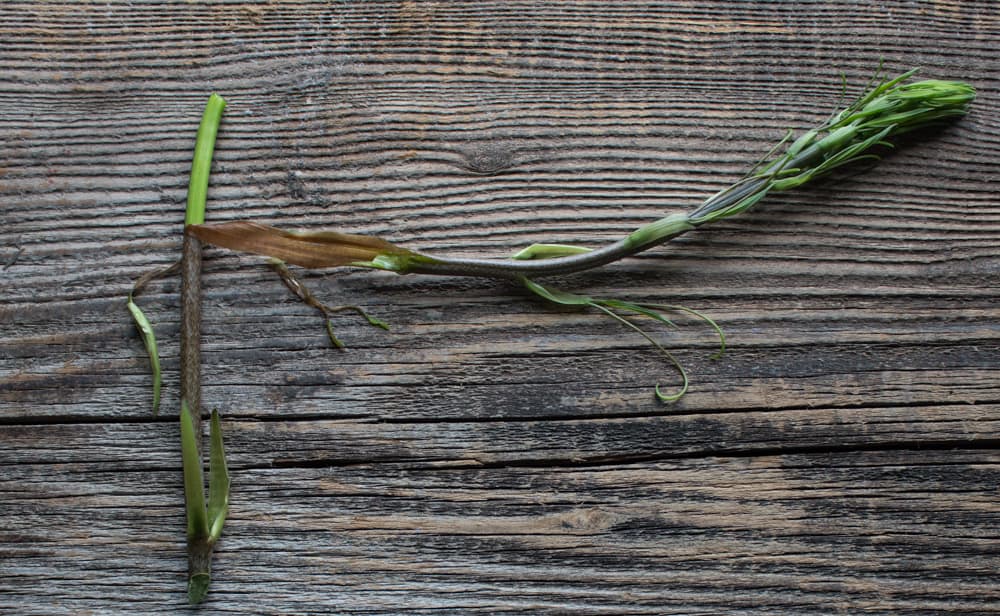
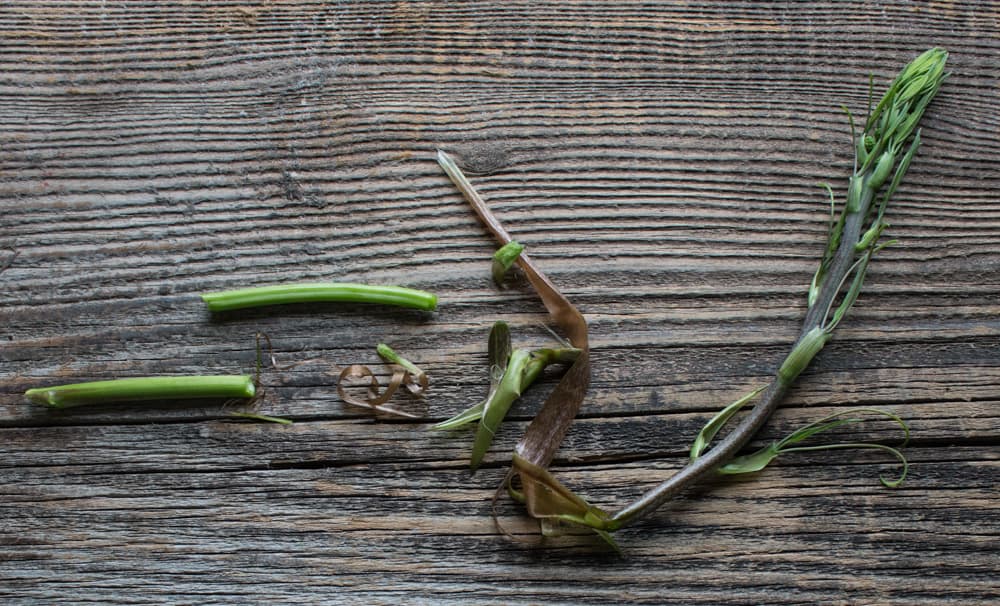
Should I blanch them?
Nope. Totally unnecessary. Smilax is a mild, delicate plant. Blanching robs the shoots of some of their flavor, and can make you wind up with a mushy mess instead of an asparagus-like vegetable. When you find some, sample them raw and treat them with a gentle hand, less is more with these.
Storage
Smilax shoots will get limp faster than asparagus, but there's a couple things you can do to prevent a limp shoot.
Since the shoots are generally long, it can be cumbersome to figure out how to store them in the fridge. Over a week of experimenting I came up with a couple options. Wrapping the cut stems of whole shoots in a few layers of damp paper towels, and then in a resealable bag seemed to be the best, but the vase technique was also good. The more you keep the stems wet and chilled, the longer they'll stay crisp. Here's the 3 ways I treated them.
- Cut the shoots into manageable sized pieces and store in a plastic bag with a damp paper towel.
- Wrap the bottom of the shoots in a damp towel
- Store the shoots upright in a vase or other container with a few inches of cold water. Make sure to stand the shoots against something (the wall works fine) so that they don't tip over.

Lori Kimberly
Just found smilax. Had magnificent clusters of dark berries. Wondering if I should go back and harvest them?
Have you found use for the berries?
Alan Bergo
I haven’t used them, sorry.
Lori Kimberly
Thanks Alan! I get so much information from you and I love your book!
Alan Bergo
Thanks Lori.
Psychology CT LLC
Are these so good that you would recommend that I get seeds, plant them, and take up some Garden space to have them? Perhaps I'll find them one day, but so far I've not recalled ever seeing those here in Connecticut.
Alan Bergo
They'd sure make an interesting garden plant. As they're semi vine-like, maybe you could have them grow up a wall or trellis. For the yield I don't know if I would give up garden box space. I would plant them where I would plant hops or grapes.
John Smalldridge
I'm Glad you found your local smilax, Smilax is one of my favorite pick and eat trail snacks.
Alan Bergo
Thanks John, yeah these are really great.
Bryan
Hi Alan, do you know the Latin name of this variety? Is it Smilax lasioneura?
Alan Bergo
It’s hard to parse and I’m not sure. If I had to guess, Marie Viljeon and I speculated it could be rotundifolia.